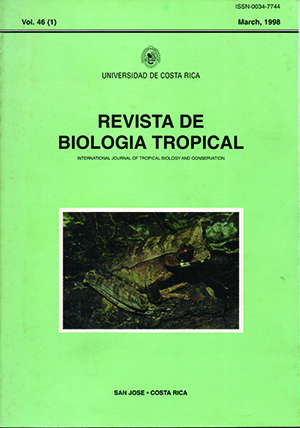Abstract
The tlora of the continental Island of Gorgona (Colombia) and that 01' the forests on the Chocó biogeographical region of Colombia and Ecuador were compared with speeies-area curves and species diversity indexes, either previously published or calculated using the original data oflne vegetation surveys. The curves and the Shannon diversity index showed that the forest of Gorgona is less rieh in tree species than the mainIand sites. Furtherrnore, the Shannon equitability index in five continental lowland forests was higherthat inGorgona, suggesting that the number of trees per species is more evenly distributed in Ihe continental forests. In Gorgona. seed and fruit dispersal was primarily carried out by birds (49.7 % of the species), as repol1ed for the islands 01' Galapagos in Ecuador (60 %) and in the biogeographic island orthe cloud forest of the Serranía de Macuira, Guajira, in the north of Colombia (51 %). In contrast, dispersal by mammals was the main mechanism for tree species in the continental forests 01' Cabo Corrientes, Bajo Calima(Colombia) and Los Tuxtlas (México). Although the fores! a! Gorgona is no! particularly rich on tree species. it plays an important role in the protection of marine ecosystems. A reduction in forest cover would result in an increase in soi! erosion rates and Iandslides that would greatly affeet marine hiota, pm1icularly of coral reefs.
This work is licensed under a Creative Commons Attribution 4.0 International License.
Copyright (c) 1998 Revista de Biología Tropical

